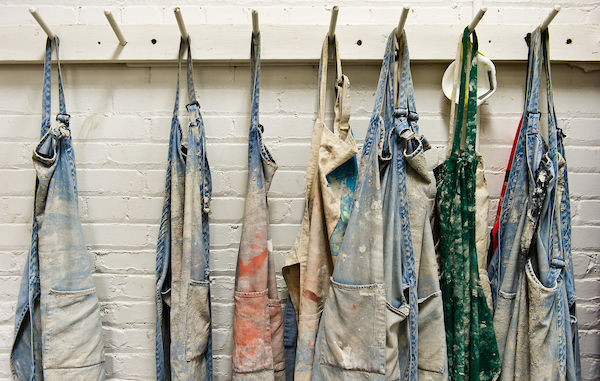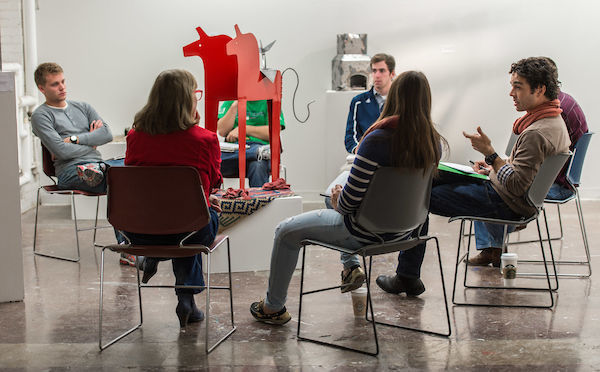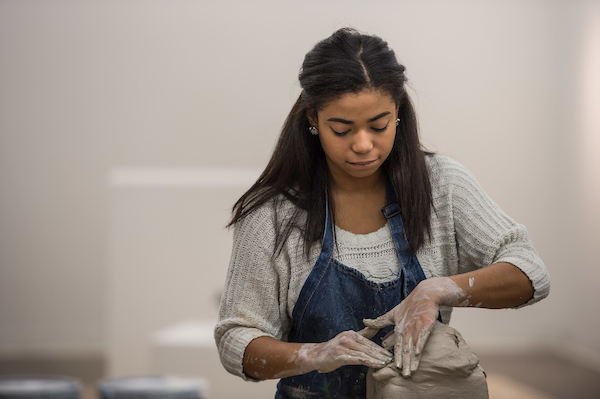

The First Year of Studies system is beneficial to students for many reasons: it allows them to study a little of everything and gain a strong academic foundation; it provides a cushion to students who don’t know their major coming in or decide to switch; and it ignites conversation and curiosity in subjects that would not be covered specifically within your chosen major or minor.
Fine arts (including art history and design) classes fulfill the Fine Arts or Literature Requirement, something all students must graduate with. It can be intimidating looking at a list of classes and thinking, “Which one is for me?,” but luckily, your girl Mary Kate had to take almost all of these to get her BFA. Here is my honest insight into the classes I’ve taken that fulfill this requirement.
Survey of Early 20th-Century Modernism*
I love few things more than 20th-century art, and an intro class is the perfect way to become comfortable with it. Because of time restrictions, survey classes focus primarily on the most avant-garde works of the period, which at first glance just seem like the most weird. If you are willing to keep an open mind towards the out-there world of modern art, this is the class for you. Unlike some of the other options, it is a 200-level rather than a 100, meaning it is closer to a sophomore-level of difficulty.
Rome: The Eternal City
Although listed as an art history course, this one focused primarily on Roman architecture, which makes this a great opportunity for students who wouldn’t otherwise have a chance to take architecture classes. Some pre-existing knowledge of Rome and Italian language, although not necessary, does provide an advantage. Like the other art history offerings, this is a 200-level class.
2D Foundations
2D is basically an introduction to design. Classes cover topics like color theory, composition, different printing methods, stop-motion animation, and other basics, supplemented with art and design history for context. Although a lot of the work is analog, there are elements of digital art later in the semester. If you are curious about design and/or want to learn more about the digital programs designers use, this is a good choice.
Drawing 1
This class description is straightforward—it’s an introduction to drawing. This studio is mostly learning through doing, but the small classes mean the professor has plenty of time to check in with each individual student. Although the first few projects will all be art school classics, (plenty of working on how to shade fabric) there are opportunities later in the semester to work on more personal and creative projects.
3D Foundations (Open only to intended majors)
Similar to 2D, 3D is an introduction to sculpture. Each project focuses on different mediums (such as paper, wood, metal, and clay) and is one of the few foundations classes where students can immediately start creating conceptual work within the first project. This class does deal with power tools, but as a class only open to intended majors, the students taking it will likely need to use power tools in their later classes.

Photography 1
This class focuses almost exclusively on digital photography, but after you take it you have the opportunity to take more advanced photography classes that use film. Although a large portion of the class is obviously dedicated to taking and editing photos, there is also a focus on the history of photography, both as an art and a science. Because of the popularity of digital photography, this class doesn’t have a ton of spots for non-majors, so make sure you have a backup plan.
Ceramics 1 (Open only to intended majors)
I was under the impression that I would be starting on the wheel day one, but this class actually teaches coil, slab, and other hand-building methods before students even start to think about spinning up some perfect mugs. I was surprised to see both how difficult the wheel was (they make it look so simple in the movies) and how much you could improve by coming in every day and spending a few extra hours working.

Design Matters - Introduction to Design Thinking
Unlike other foundations courses, which focus more on elements and principles of art and design, Design Matters focuses more on the questions of “why” and “how.” This class introduces you to the idea that all things in the world are designed, from posters to complex government systems, and by knowing that we can approach these systems through the lens of design as problem-solving.
*I have not taken this specific class, but in the fall 2015 semester I took “Introduction to 20th-Century Art,” a class not offered this upcoming semester and taught by a different professor. However, based on the class descriptions and class levels, I am making an assumption that these classes are very similar.